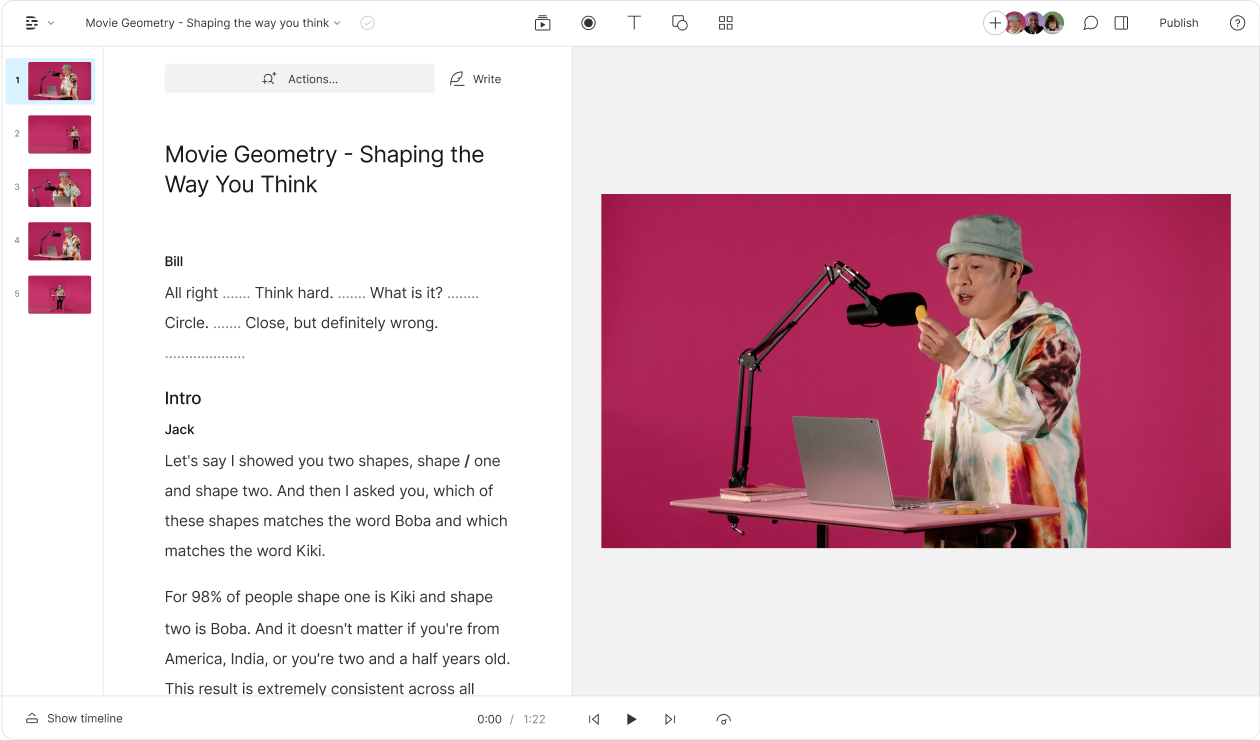What type of content do you primarily create?




For more insights on virtual teaching, watch our webinar featuring innovative educator Dan Frank
Back to School: Make the Most of Virtual & Hybrid Classrooms
While most colleges and universities reopened for the 2021-2022 academic year, the new reality for postsecondary education looks less like an actual classroom full of students and more like a hybrid model with some in-person instruction, some streaming and some on-demand video. The Chronicle of Higher Education’s list of college reopening models for the fall of 2021 showed that of nearly 3,000 colleges surveyed, 10% would open fully online, 34% planned a primarily online academic calendar, and 21% would be hybrid.
An opportunity to innovate
The impetus for the shift to e-learning may be novel, but the concept is not (the term itself was coined in 1998). By 2019, more than seven million students were already enrolled in distance education classes in America’s degree-granting institutions. Ivy League schools had already begun online education courses prior to the pandemic, and 46% of their faculty members had taught an online course by 2019.
Projections for the growth of the distance learning market show that more and more of the nation’s students—and workers—will opt for remote instruction in the future, even after physical classrooms reopen. Technology research outfit Technavio anticipates $72 billion growth in the remote learning market between 2020-2024—up from prior estimates of $12 billion.
As hybrid learning begins to shape the future of postsecondary education, institutions face an opportunity. A recent Deloitte report concludes that the “jolt” of online learning has sparked a wave of innovation on campuses, encouraging professors to reimagine courses that have gone untouched for years, and prompting academic leaders to offer students more flexibility. A new learning environment—combining in-person learning with both prerecorded and live streaming video, as well as other modes of communication—is just the kind of disruption that leads to transformation, and the Deloitte report says that the coming changes will reverberate on campuses for decades.
8 virtual-teaching tips for educators
An undeniable fact of online teaching: Instructors now must compete with the entire internet for their students’ attention during virtual classes. Here are eight tips for keeping students engaged in a virtual or hybrid class format.
Encourage chat participation
Students can be just intimidated to raise their hands or speak up in an online environment as they would be in the classroom, especially in larger online classes. Virtual teaching gives you an elegant way to encourage participation without the fear of public humiliation: ask students to send you private messages during class and use the chat function to make speaking up less intimidating. You can also create polls that lead to discussion and allow students to voice their opinions anonymously.
Mix communication channels
When students are trying to track messaging from multiple classes, emails can bog them down or get lost in the fray. Email may not be this generation’s preferred medium anyway. Consider sending video messages to your class. They can break up the monotony of written communication, and help your students feel like they’re getting to know you better. You can include screen recordings to demonstrate tasks or provide guidance.
Collaborate
Many instructors feel that the online format has forced them to act less professorial and more collaborative in order to keep their students’ attention and build relationships. Embrace that: greater cooperation and conversation will benefit everybody. Google docs and collaborative tools like Jamboards and the Slack messaging app can facilitate your collaboration and ratchet up the engagement.
Get creative
Not every institution can mandate that students keep their video on. Some students may live in crowded, multi-generational households without adequate privacy, or feel embarrassed by their living conditions for any number of reasons. To encourage participation off camera, consider assigning students to create avatars or choose video backgrounds that let them express themselves.
Rate your own room
In the Twitter account Room Rater (@ratemyskyperoom) contributors rate the Zoom, Skype, and other backgrounds used by newscasters, politicians, and other talking heads on television. It also gives great hints for how instructors can create engaging space for themselves. The basics: Keep the camera at eye level, check your lighting (natural light works best; consider a ring light if you can’t sit facing a window), make sure your Wi-fi will hold up, and test your sound (consider investing in a basic USB microphone to ensure you’ll come through clearly). Make your background interesting, but not distracting.
Flip the format
Try sending a transcribed mini-lecture or video presentation before class, and then dedicate class time to activities that require participation. University of California Santa Barbara professor Dr. Dan Frank uses Descript to edit and share his lectures before class. “It makes my lectures sharp, fast, and accessible with the interactive transcript,” he says. Another professor, in a doctoral program, takes the production a step further, using Descript to punch up recorded lectures with intro and outro music.
Go one-on-one
Virtual office hours, scheduled via collaborative sign-up sheet or through private message, can give you the opportunity to provide one-on-one time and forge relationships with your students. The ensuing conversations can present opportunities to suggest additional material: videos, podcasts, and transcribed lessons
Be accessible
Particularly for students with less trustworthy Wi-fi, those with hearing challenges, or those for whom English is a second language, you should caption video content and transcribe everything. “I find that my students benefit from reading the transcripts of videos and podcasts that are presented in class,” says one instructor whose classes include English taught as a foreign language. They use Descript, so they can add captions in a few clicks and get auto-generated transcripts.
That same professor has found some unexpected benefits in using technology in their remote teaching. “I also think it’s very useful to transcribe recordings of student presentations with Descript,” they say. “This allows students to see and read how they speak, and it allows me to analyze their vocabulary and syntax after the presentation is over.”
Educators who open themselves up to the opportunities for innovation created by online instruction, rather than treating it like a necessary evil, can flourish in today’s hybrid and virtual classroom settings. Many of the new information-delivery methods they’re discovering are more aligned with how today’s students communicate. Turns out, education works better when both sides are willing to learn.








.jpeg)




















%201.svg)





%20(1).JPG)


